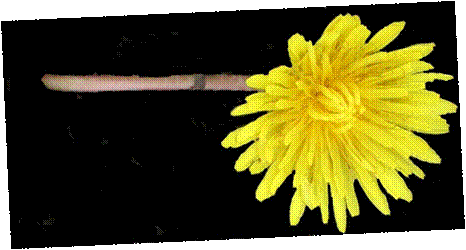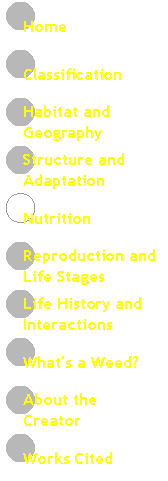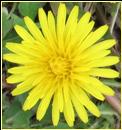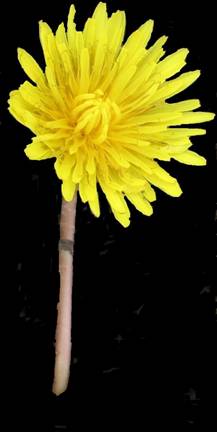



|
Nutrition |
|
PHOTOSYNTHESIS—FOOD SOURCE
Plants, more specifically dandelions, are photoautotrophs, meaning they can produce their own food and therefore called “self feeders.” Photoautotrophs obtain their energy from sunlight in a process called photosynthesis. Photosynthesis uses the sun’s light to stimulate a multi step reaction to make carbohydrates (sugars) that can be used for aerobic respiration. A simplistic view of photosynthesis is below, but keep in mind that this is a very complex step reaction. Photosynthesis takes place in the leaves of the plant, but more specifically within the mesophyll cells of the leaves. Within the mesophyll cells there are palisade cells that contain chloroplasts. A chloroplast is a three membrane structure that contains stroma as the matrix and thylakoids. Chlorophyll, which is the site for photosynthesis, is contained within the thylakoid.
DIAGRAM OF PHOTOSYNTHESIS |
|
In addition to making their own food, plants are capable of making all of their own proteins, DNA, and chlorophylls. However, as shown in photosynthesis, they do need to obtain carbon dioxide, water, and sunlight. They also need to obtain nitrogen, phosphorus, potassium, sulfur, and magnesium. These molecules can be absorbed through the roots of the plant and can be transported throughout the plant by the use of water in the vascular system. If the roots contain myhorrizae, a fungus that grows around the roots of the plants, it increases the roots ability to absorb water from the soil. The rosette helps to collect the rain by draining the water towards the tap root for absorption. |
|
VASCULAR SYSTEM—WATER SOURCE
The root of a plant contains two parts, the xylem and the phloem. The xylem is dead tissue that transports water from the root up to the leaves where photosynthesis and evaporation are occurring. The water is pulled up through bulk flow, not pushed up and not by diffusion. There are four basic properties.
1-Transistion—The evaporation and photosynthesis use of water on the leave structure, therefore the shoot system needs water. 2-Adhesion—The ability of different molecules to attract to each other; in this case, water is attracted to the xylem walls and able to move up. 3-Cohesion—The ability of similar molecules to attract each other, such as water molecules binding together to move up the xylem. 4-Water Potential—Water moves from an area of low solute concentration to an area of high solute concentration.
Once water moves up the xylem, it crosses over to the phloem to transport the nutrients made from photosynthesis down to the roots. The phloem contains living cells and obtains the food from the leaves undergoing photosynthesis. Water from the xylem moves over into the phloem by water potential and moves down into the roots to be stored or used up. |
|
H2 O & Sunlight O2
ATP/NADPH
CO2 Sugar
ADP/NADP+ |
|
Light Dependent Reactions Uses the sun to make ATP/NADPH In the thylakoid membrane |
|
Light Independent Reaction “Calvin Cycle” Uses ATP/NADPH to make sugars (In the stroma matrix) |




